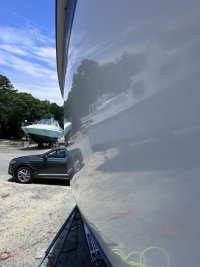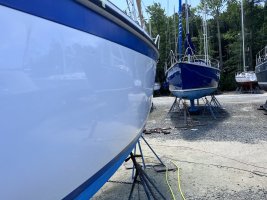matias
E38-200 - NYC
I notice fellow sailors going directly to polish! no wash no prep! I know we are anxious to launch especially here in the northeast U.S.
I brought my power washer and gave the boat a good wash above the water line and just a good water spray below. After assessing the gelcoat I'm going with a compound buff first. Then a paste wax buff, folllowed by a new polymer base wax as a final application. I'm curious does anyone wash the boat while on the hardstand or just go directly to polish?
I brought my power washer and gave the boat a good wash above the water line and just a good water spray below. After assessing the gelcoat I'm going with a compound buff first. Then a paste wax buff, folllowed by a new polymer base wax as a final application. I'm curious does anyone wash the boat while on the hardstand or just go directly to polish?





